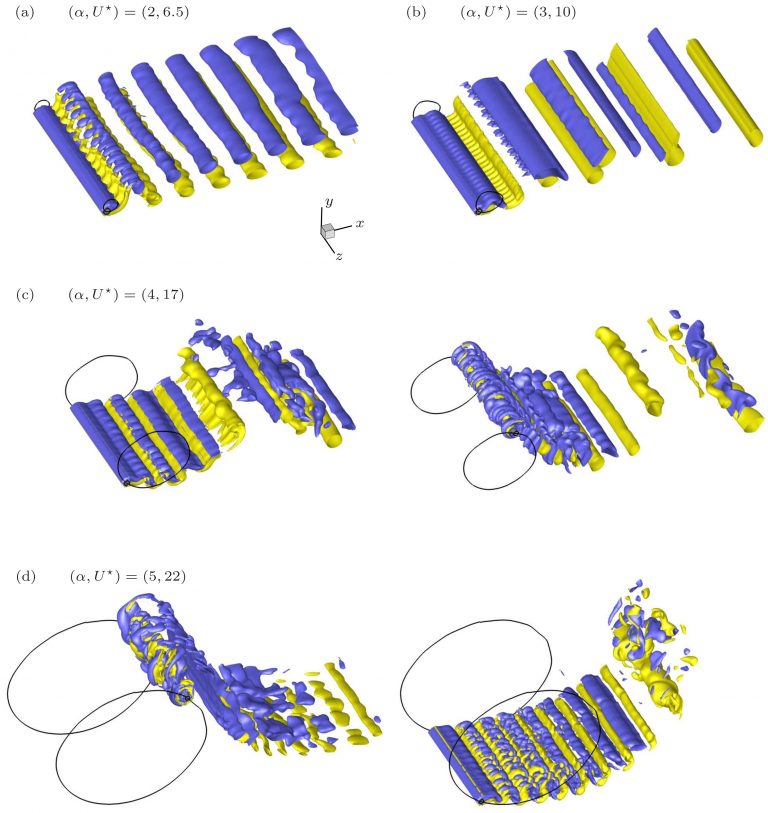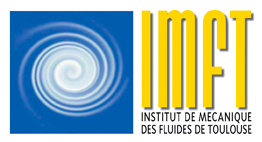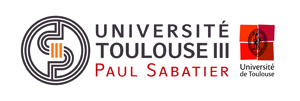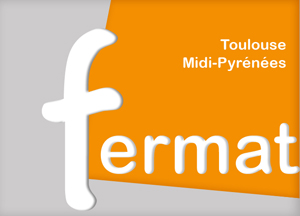Fluid-structure interactions
Flow-induced vibrations of rigid and flexible bodies
Contact: Rémi Bourget
Flow-induced vibrations of flexible or elastically mounted rigid bodies are omnipresent in nature (e.g. oscillations of trees in wind) and are also common in many civil, offshore and nuclear engineering applications (e.g. vibrations of mooring lines and cables exposed to ocean currents). These vibrations impact the fatigue life of the structures and often cause an amplification of the forces exerted on their supports. In the context of renewable energy production, they may also be used to harvest energy from wind or water streams.
Two forms of flow-induced vibrations are frequently encountered for bluff bodies: vortex-induced vibrations (VIV) and motion-induced vibrations (MIV). VIV result from a synchronization, referred to as lock-in, between body response and flow unsteadiness associated with vortex formation in the wake. These high-frequency oscillations exhibit amplitudes of the order of one body diameter in the direction normal to the current. In contrast, MIV do not require wake-body synchronization. They develop when the motion of the bluff body tends to enhance the energy transfer from the flow to the structure, leading to self-excited, low-frequencies oscillations of possibly large amplitudes and often referred to as galloping responses.
This research axis explores the underlying physical mechanisms of VIV and MIV, as well as their possible interactions.
Some recent works on this topic:
– vortex-induced vibrations in the turbulent regime,
– flow-induced vibrations of a slender body inclined in flow,
– vortex-induced vibrations of a flexible cylinder at subcritical Reynolds number,
– flow-induced vibrations of a rotating cylinder.

Flow-induced vibrations of an elastically mounted rigid cylinder subjected to a forced rotation about its axis, for different rotation rates and natural frequencies of the oscillator. For each case, cylinder trajectory is indicated by black lines and the wake is visualized via iso-surfaces of spanwise vorticity.
(From R. Bourguet, Two-degree-of-freedom flow-induced vibrations of a rotating cylinder, Journal of Fluid Mechanics, 897:A31, 2020.)
Fluid-structure interactions close to a free surface
Contacts: Jérôme Mougel, David Fabre
PhD Thesis: Nabil Achour
We investigate the effect of a nearby free surface on classical fluid-structure interaction problems. This ranges from free surface effects on vortex induced vibrations of bluff bodies to free surface impact on the stability of flexible membranes or flag-like structures. We aim at understanding flow/structure/free surface coupling mechanisms from a fundamental view point, and at obtaining results of fundamental interest in various fields such as, for instance, ocean wave/current energy harvesting.

Illustration of the velocity potential corresponding to an incident free surface wave with normalized pulsation, w, impacting a flexible tensioned membrane with a punctual energy harvesting system at its center. For this value of the uniform incoming current quantified by the Froude number, Fr, and fixed characteristics of the system, an important fraction of the incident wave energy can be extracted.





